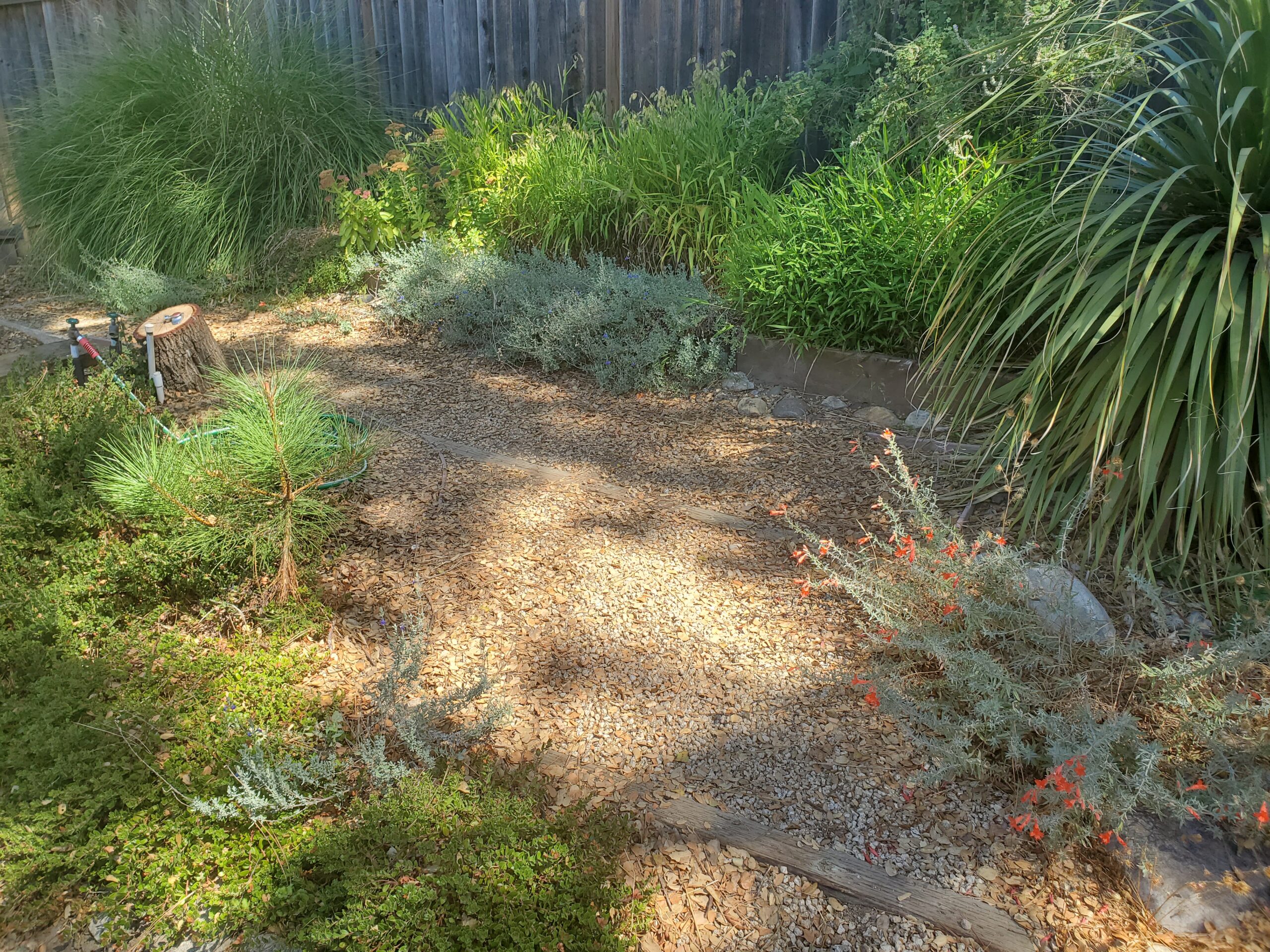Focus on Fall
The Ben Lomond Gardener
By Uncle Skip
Early Fall is a critical season for garden planning and renovation. Bulbs must be planted or lifted and divided. Perennials, herbs, and shrubs are best planted in advance of Fall rains (oh please, dear goddess). Next year’s sweet peas, garlic, chives, and onions should be started now (or soon). Now’s the time to “edit” underperforming plants, for example, plants that refuse to die or grow, but instead sulk wearily in place spoiling the view. Also, many plants suffering burns recover, but if the brown has got you down, swallow hard, remove them, and put them in the compost where they will do some good. Or in the green waste to become somebody else’s mulch, a happy ending if there ever was one.
Once any pruning and editing is done, spread some compost (or leaf mold or wood chips). If you intend to make hardscape changes, do that first, then add your compost. Some of you hardy re-settlers will exert much effort digging in your compost. I salute you. However, remember that compost on soil (versus dug in) eventually works the same magic. It takes a lot longer, but your earthworms will get the job done. Whatever you do, do not leave the dirt bare! I’ll save that rant for another column.
Now, before the rains and mud, is a great time to make hardscape changes. Digging, leveling the ground, building paths, installing gravel, rock features, or irrigation pipe, etc., are all much easier in dry or slightly moist soil. Mud is much heavier than dry dirt. Digging wet soil also destroys soil crumb structure, which may take your earthworms a few years to restore.
Wood ash is full of nutrients. Best known as a source of “potash” or available phosphate, it also contains Calcium carbonate, a liming agent, and many essential micronutrients. Hard wood ash is probably richer in nutrients than that of softwood (conifers). Ash on top of your soil effectively deters snails and slugs, and possibly pill bugs and even skunks. A light dusting of ash on plants and soil can be hosed off. Too much ash can be a problem. Excess calcium carbonate and mineral salts can burn plant roots. Please note: Ash from structures and manmade sources may contain unfriendly residues. Proper management of that kind of ash is beyond my scope. Please seek guidance from those with environmental expertise.
If it is all too much to bear, get a bag of daffodil bulbs and bury them 6” deep in a few pots. Put the pots somewhere you can see from a window. And wait for the joy and renewal they bring you next February and March.
Uncle Skip writes about seasonal gardening from his home in beautiful Ben Lomond, California.
The San Lorenzo Valley Post is your essential guide to life in the Santa Cruz Mountains. We're dedicated to delivering the latest news, events, and stories that matter to our community. From local government to schools, from environmental issues to the arts, we're committed to providing comprehensive and unbiased coverage. We believe in the power of community journalism and strive to be a platform for diverse voices.





